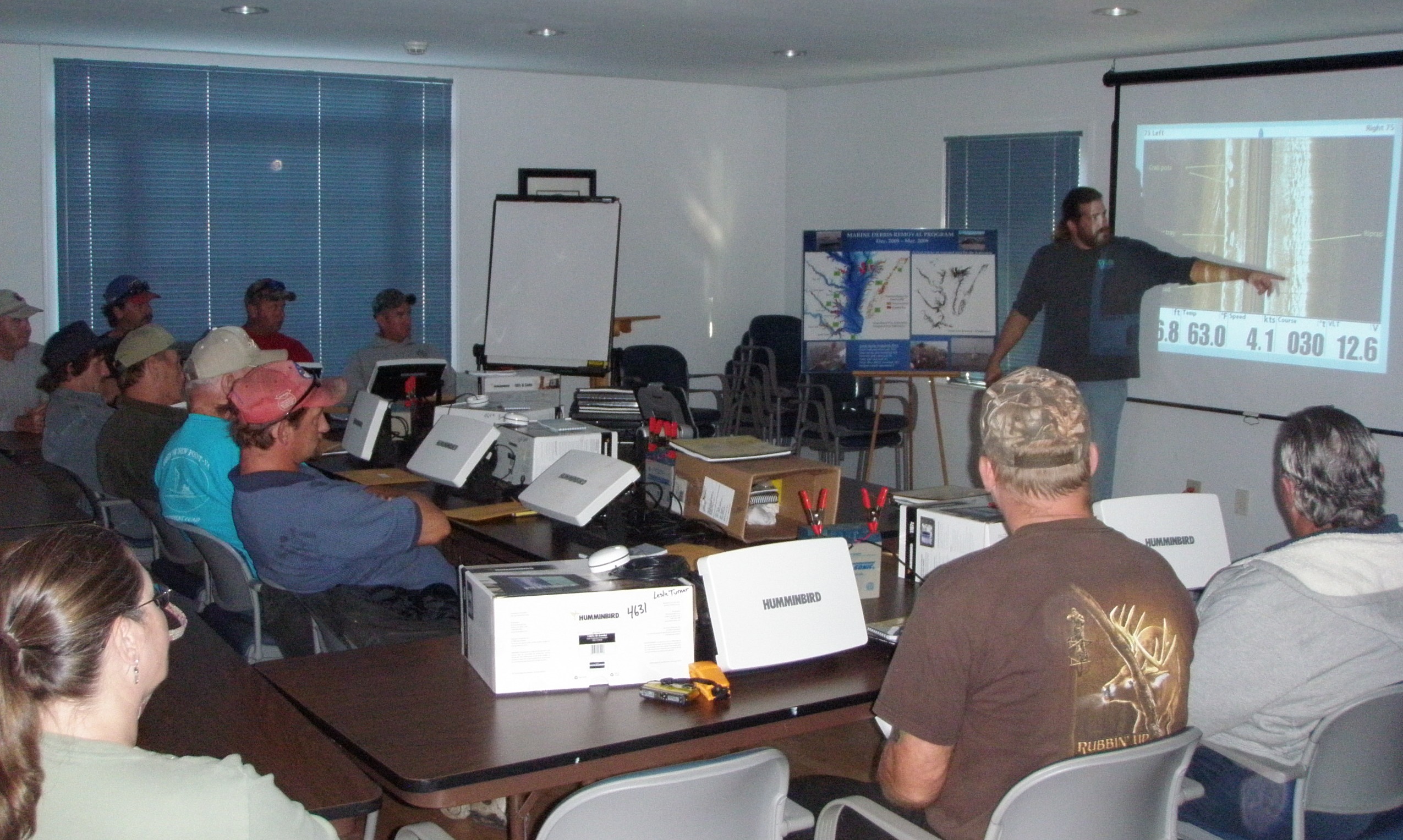DIY Derelict Fishing Gear Removal Program
A guide to developing and implementing your own derelict fishing gear removal program.
Derelict fishing gear detection and removal methods depend upon the type of gear and the physical characteristics of the environment in which the lost gear is located. There are generally two important criteria: detection and identification. However, some basic guidance and essential baseline data collection is applicable across a suite of stationary gear types and can be helpful in providing critical information on the ecological and/or economic impacts resulting from derelict gear.
Derelict Gear Removal Highlights
- Engage commercial fishers and resource managers early in the planning
- Where appropriate, hire commercial fishers for data collection and derelict gear removal
- Obtain GPS coordinates for all gear removed
- Take pictures of all gear removed
- Collect data on derelict gear bycatch
- Collect data on derelict gear condition

Start your own marine debris removal program with the guidelines and tools provided below.
Resources
- Marine Debris Location and Removal Training (pdf)
- NOAA Protected Species Protocol (pdf)
-
Assessing Ecological and Economic Effects of Derelict Fishing Gear: A Guiding Framework (pdf)
Equipment
- Grappling Device - Bottom trawling or grappling is a direct survey method that usually involves dragging a hook and line type device on the bottom of an area in an effort to capture derelict gear.
- Survey Method - Regardless of the survey method used, training on various images that will be potentially encountered during the survey is critical.
- Boat with Winch
- Blank Data Sheets - (pdf)

